Table of Contents
Gamification in learning is a relatively new concept that has gained traction in recent years. It involves incorporating game elements and mechanics into non-game contexts, such as education and training programs. The goal is to make learning more engaging, fun, and effective by tapping into learners’ intrinsic motivation and desire for achievement.
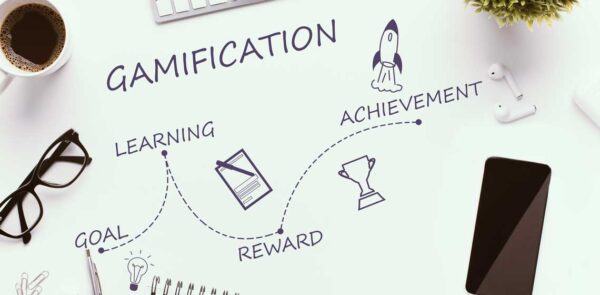
Fundamentally, gamification is about creating a learning experience that is more immersive, interactive, and rewarding. Simply put, it is learning by playing. It draws on the principles of game design, such as feedback loops, rewards, challenges, and progression, to create a sense of flow and momentum. By making learning more enjoyable and satisfying, gamification can help to increase learners’ motivation, engagement, and retention of knowledge.
Gamification in learning has been implemented in various contexts, from K-12 schools and universities to corporate training and professional development programs. It has been used to teach a wide range of subjects, from math and science to soft skills and leadership.
Designing effective gamified learning experiences requires careful consideration of the target audience, learning objectives, and game mechanics. It also involves measuring success and outcomes to ensure that gamification is achieving its intended goals.
Key Takeaways
- Gamification involves incorporating game elements and mechanics into non-game contexts, such as education and training programs, to make learning more engaging and effective.
- Gamification has been implemented in various educational contexts and has been used to teach a wide range of subjects.
- Designing effective gamified learning experiences requires careful consideration of the target audience, learning objectives, and game mechanics, as well as measuring success and outcomes.
Fundamentals of Gamification
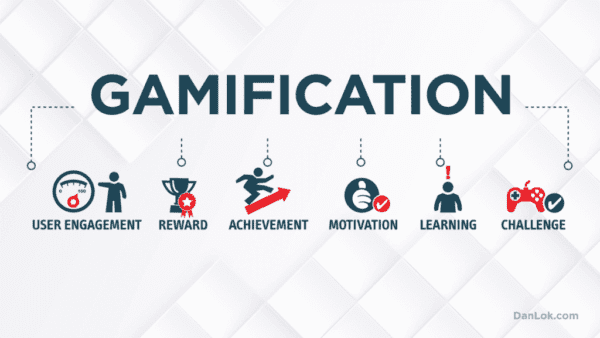
History and Evolution
The concept of gamification has been around for centuries, with examples dating back to ancient civilizations. However, it was not until the 21st century that the term “gamification” was coined. The rise of digital technologies and the increasing popularity of video games led to the development of gamification as a technique for improving engagement and motivation in non-game contexts.
Key Components and Game Mechanics
Gamification involves the use of various game mechanics and elements to create an engaging and motivating learning experience. Some of the key components of gamification include:
- Points, badges, and leaderboards: These are common game elements used in gamification to motivate learners to achieve their learning objectives.
- Challenges and quests: These are activities that learners must complete to progress through the learning experience.
- Feedback and rewards: These are provided to learners to reinforce positive behavior and encourage continued engagement.
- Avatars and personas: These are digital representations of learners that can be customized to reflect their personalities and preferences.
- Progress bars and status indicators: These are used to show learners how far they have progressed through the learning experience and what they need to do to achieve their objectives.
By incorporating these game mechanics and elements into the learning experience, gamification can help learners stay motivated and engaged, leading to improved learning outcomes.
Gamification in Educational Contexts
Gamification in learning is a growing trend, as it has been shown to increase student engagement, motivation, and learning outcomes. In this section, we will discuss gamification in educational contexts, including gamified learning in the classroom, technology and platforms, and educational approach and theory.
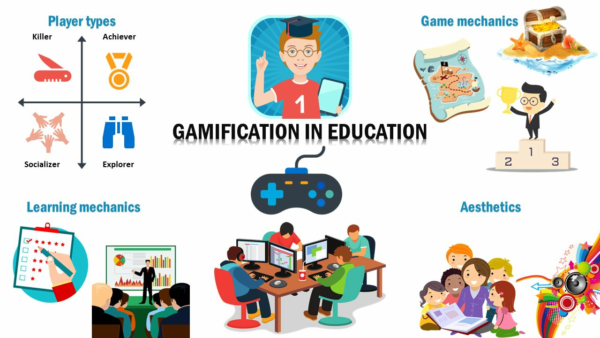
Gamified Learning in the Classroom
Gamified learning in the classroom is a fun and engaging way to teach students. It involves using game mechanics, such as points, badges, and leaderboards, to motivate students to learn. Gamified learning can be used in any subject, from math to history, and can be adapted to any grade level.
One of the benefits of gamified learning is that it can increase student engagement. When students are engaged, they are more likely to be motivated to learn. Gamified learning also provides immediate feedback, which can help students to understand the material better. Additionally, gamified learning can be used to differentiate instruction, as students can work at their own pace and level.
Technology and Platforms
Technology plays a crucial role in gamified learning. In the age of edtech, there are many platforms available that allow teachers to create and implement gamified learning experiences in the classroom. Some popular platforms include Kahoot!, Quizlet, and Classcraft.
Kahoot! is a game-based learning platform that allows teachers to create quizzes and games for their students. Quizlet is a flashcard-based platform that allows teachers to create and share flashcards with their students. Classcraft is a role-playing game that allows students to create and customize their own characters and embark on quests with their classmates.
Educational Approach and Theory
Gamified learning is based on the theory of serious games, which suggests that games can be used for more than just entertainment. Serious games are designed to teach players something, whether it is a new skill or knowledge. Gamified learning is also based on the cognitive theory of learning, which suggests that learning is most effective when it is active, engaging, and meaningful.
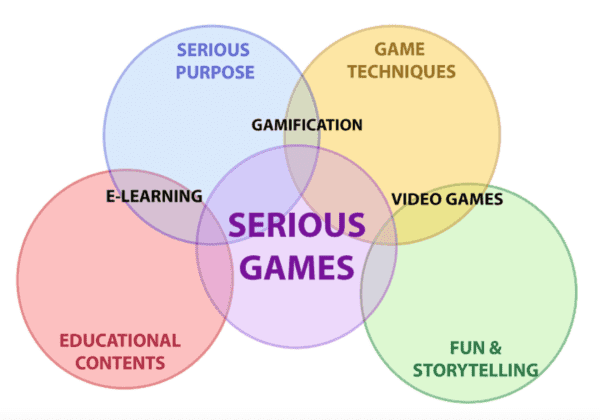
Hence, gamification is a powerful tool that can be used to enhance learning in the classroom. By incorporating game mechanics, technology, and educational theory, teachers can create engaging and effective learning experiences for their students.
Designing Gamified Learning Experiences
Gamification is a powerful tool in learning that can help you engage and motivate your learners. However, designing an effective gamified learning experience requires careful planning and consideration of several factors. Let us explore some key considerations for designing gamified learning experiences that are engaging, effective, and fun.
Setting Goals and Learning Objectives
Before you start designing your gamified learning experience, you need to set clear learning objectives and goals. These objectives should be aligned with your learners’ needs and your organization’s learning outcomes. By setting clear goals and objectives, you can create a more focused and effective gamified learning experience.
Creating Engaging Challenges
The challenges you create for your gamified learning experience should be engaging, challenging, and relevant to your learners’ needs. You can use game design elements such as points, badges, and leaderboards to motivate your learners and create a sense of competition. However, it’s important to ensure that the challenges are not too difficult or too easy, as this can lead to frustration or boredom.
Incorporating Storytelling and Narratives
Storytelling and narratives can be powerful tools in gamified learning experiences. By creating a compelling story or narrative, you can engage your learners and create a sense of immersion in the learning experience. You can use scenarios, characters, and plot twists to create a more engaging and memorable learning experience.
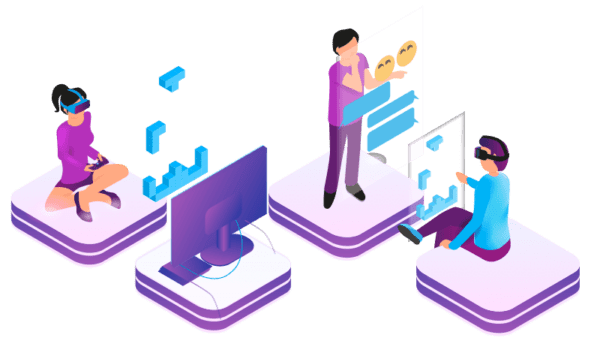
Designing a gamified learning experience requires careful planning and consideration of several factors. By setting clear goals and learning objectives, creating engaging challenges, and incorporating storytelling and narratives, you can create a more effective and engaging learning experience for your learners.
Psychology and Motivation in Gamification
Gamification in non-game contexts, such as learning, aims to increase engagement, motivation, and achievement. The use of gamification in learning has been shown to increase the intrinsic motivation of learners, which refers to the motivation that comes from within oneself. Intrinsic motivation is more effective than extrinsic motivation, which refers to motivation that comes from external factors such as rewards or punishments.
Intrinsic vs. Extrinsic Motivation
According to research, intrinsic motivation is more effective than extrinsic motivation in promoting long-term behavior change and engagement. Intrinsic motivation is driven by the enjoyment of the activity itself rather than the external rewards or punishments associated with it. In contrast, extrinsic motivation is driven by external factors such as rewards or punishments.
Self-Determination Theory
Self-determination theory is a psychological theory that explains the motivation behind human behavior. According to the theory, there are three basic psychological needs that must be satisfied for individuals to be motivated: autonomy, competence, and relatedness. Autonomy refers to the need to be in control of one’s own behavior, competence refers to the need to feel capable of achieving goals, and relatedness refers to the need to feel connected to others.
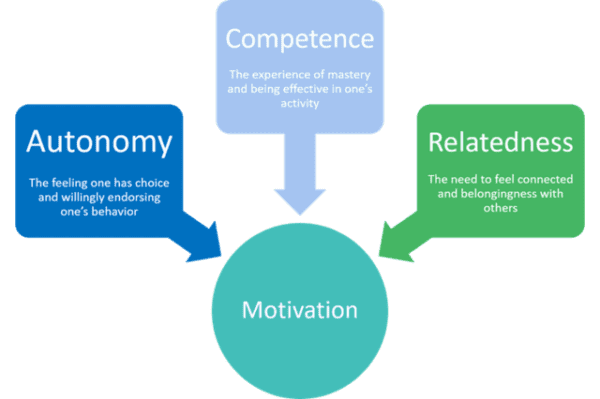
Gamification can help satisfy these psychological needs by providing learners with a sense of autonomy, competence, and relatedness. For example, learners can have control over their learning experience by choosing their own learning path or setting their own goals.
Gamification can also provide learners with a sense of competence by providing them with immediate feedback on their progress and achievements. Finally, gamification can help learners feel connected to others by providing opportunities for collaboration and social interaction.
Behavior Change and Engagement
Gamification has been shown to be effective in promoting behavior change and engagement. The use of game design elements can motivate learners to engage in learning activities and achieve their goals. Gamification can also help learners overcome barriers to behavior change by providing them with immediate feedback and reinforcement.
In summary, gamification is an effective approach to increase engagement, motivation, and achievement in learning. The use of gamification can promote intrinsic motivation, satisfy psychological needs, and promote behavior change and engagement. By incorporating gamification into learning, educators can create a more engaging and effective learning experience for learners.
Measuring Success and Outcomes
When it comes to gamification in learning, measuring success and outcomes is crucial. Here are some key factors to consider:

Assessment of Learning Outcomes
One of the primary ways to measure the success of gamification in learning is through assessment of learning outcomes. This can be done through traditional tests and quizzes, but also through more interactive and engaging assessments such as simulations or game-based assessments. By measuring learning outcomes, you can determine whether gamification is actually improving the retention and application of knowledge.
Feedback and Adaptation
Immediate feedback is a crucial component of gamification in learning. It allows learners to understand where they stand and adjust their approach accordingly. Additionally, adaptive learning technology can use feedback to adjust the difficulty level of learning activities to better suit the learner’s needs. This can result in more effective learning outcomes and better knowledge retention.
Long-Term Impact and Retention
While immediate feedback and assessment of learning outcomes are important, it’s also essential to consider the long-term impact and retention of knowledge. Gamification can be a powerful tool for improving long-term retention by making learning more engaging and memorable. However, it’s important to ensure that gamification is used in a way that supports long-term learning outcomes, rather than just short-term engagement.
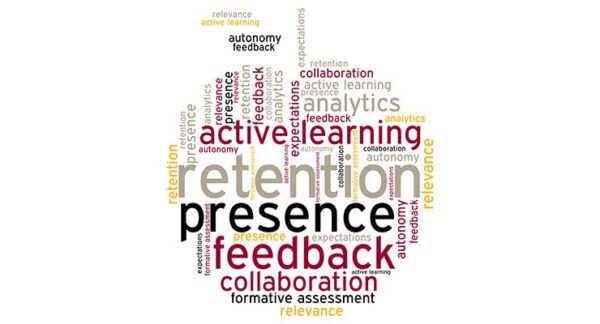
Overall, gamification can be a powerful tool for improving learning outcomes and engagement. By measuring success and outcomes through assessment of learning outcomes, feedback and adaptation, and long-term impact and retention, you can ensure that gamification is being used effectively to support learning goals.







